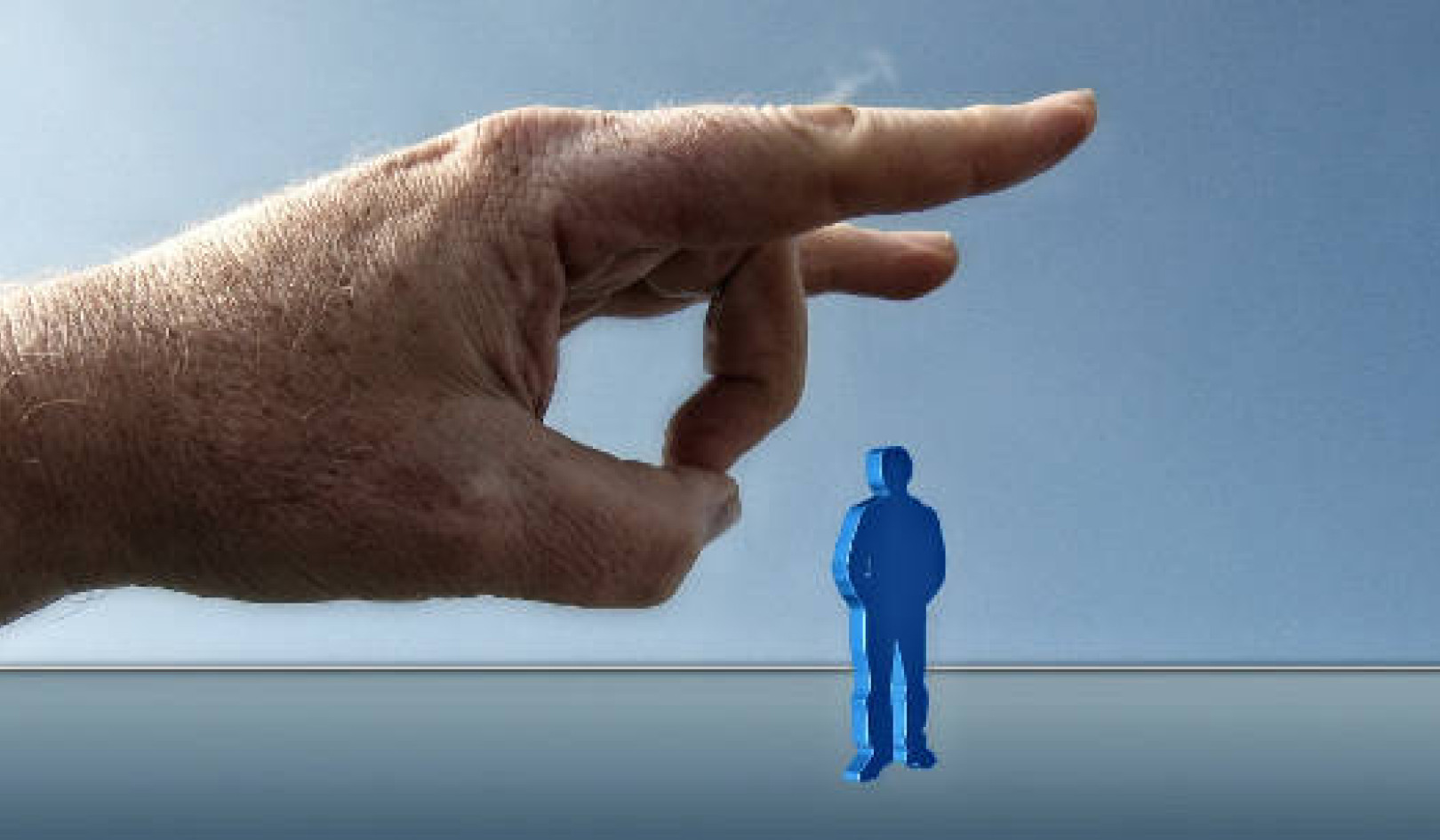
It seems reasonable to surmise that all forms of religion have been invented in an attempt to get back to our fundamental awareness of God, for the ego has never been entirely successful in completely driving our infinite source awareness from consciousness. The development of religion has engendered countless rules, rituals, and superstitions, as well as massive institutions, as the ego reinvents God in its own troubled image and thereby devises even more “blocks to the awareness of love’s presence” (from "A Course in Miracles" Text Introduction).
The Course distinguishes between “you” and the ego, characterizing the ego as a fear-driven voice within our mind that is constantly battling with our awareness of God for control of consciousness. The ego’s primary weapon in this battle is formidable, for it is the body with which we habitually identify. That body is the locus of all our pleasure, pain, apparent sin, and guilt. To look within and discover that the seeming proof of our very existence, the body, is an illusion is a shocking turn of events. The Course acknowledges the difficulty of this realization:
Undermining the ego’s thought system must be perceived as painful, even though this is anything but true. Babies scream in rage if you take away a knife or scissors, although they may well harm themselves if you do not. In this sense you are still a baby. You have no sense of real self-preservation, and are likely to decide that you need precisely what would hurt you most. Yet whether or not you recognize it now, you have agreed to cooperate in the effort to become both harmless and helpful, attributes that must go together. Your attitudes even toward this are necessarily conflicted, because all attitudes are ego-based. This will not last. Be patient... (Chapter 4, II: 5)
How Do We Awaken from the Dream of our Daily Unreality?
 Since the Course asserts that our real mind is one with God — and God is an infinite, incorruptible force or energy that does not recognize the world of time and matter that we call reality — it’s worth asking how our illusory world could ever happen, and seem so real. ACIM’s answer to this inquiry is maddeningly circular: It never did happen, because the world is an illusion. Or as the Course says simply in its Introduction: “Nothing unreal exists.” The world seems so real only because we are caught in a prolonged and utterly convincing waking dream, which can best be understood by looking at the experience of the dreams we have while sleeping:
Since the Course asserts that our real mind is one with God — and God is an infinite, incorruptible force or energy that does not recognize the world of time and matter that we call reality — it’s worth asking how our illusory world could ever happen, and seem so real. ACIM’s answer to this inquiry is maddeningly circular: It never did happen, because the world is an illusion. Or as the Course says simply in its Introduction: “Nothing unreal exists.” The world seems so real only because we are caught in a prolonged and utterly convincing waking dream, which can best be understood by looking at the experience of the dreams we have while sleeping:
Dreams show you that you have the power to make a world as you would have it be, and that because you want it you see it. And while you see it you do not doubt that it is real. Yet here is a world, clearly within your mind, that seems to be outside. You do not respond to it as though you made it, nor do you realize that the emotions the dream produces must come from you. It is the figures in the dream and what they do that seem to make the dream. You do not realize that you are making them act out for you, for if you did the guilt would not be theirs, and the illusion of satisfaction would be gone. In dreams these features are not obscure. You seem to waken, and the dream is gone. Yet what you fail to recognize is that what caused the dream has not gone with it. Your wish to make another world that is not real remains with you. And what you seem to waken to is but another form of this same world you see in dreams. All your time is spent in dreaming. Your sleeping and your waking dreams have different forms, and that is all. Their content is the same. (Chapter 18, II: 5)
Just as there is no way to explain to someone asleep and dreaming that he is currently preoccupied with a fantasy of his own making, the Course allows that no amount of explaining will suffice to wake us from the dream of our daily unreality. Instead it gives us the primary tool of awakening — forgiveness of all we see, hear, and experience — and suggests that through forgiving, we will begin to hear the voice of the Holy Spirit, which can increasingly supplant the fearful, defensive counsel of the ego with an awareness of our Source of infinite love and invulnerability.
©2011. Reprinted with permission of the publisher,
Jeremy P. Tarcher/Penguin, a member of
Penguin Group (USA). www.us.PenguinGroup.com.
This article was adapted with permission from the book:
Living with Miracles: A Common-Sense Guide to A Course In Miracles
by D. Patrick Miller.
 Living with Miracles is designed to make even the novice comfortable when approaching ACIM. D. Patrick Miller leads the reader through the most common emotions, reactions, and questions that arise when studying ACIM; provides insights and tips about pacing yourself, as well as when and how to take breaks from study; and gives advice on working through early misconceptions and difficult later stages.
Living with Miracles is designed to make even the novice comfortable when approaching ACIM. D. Patrick Miller leads the reader through the most common emotions, reactions, and questions that arise when studying ACIM; provides insights and tips about pacing yourself, as well as when and how to take breaks from study; and gives advice on working through early misconceptions and difficult later stages.
Click here for more info and/or to order this book.
About the Author
 D. Patrick Miller is the author of Understanding a Course in Miracles and The Way of Forgiveness. He is the leading historical chronicler of A Course in Miracles (ACIM) and a highly respected authority on its teachings. As a collaborator, ghostwriter, or principal editor, Patrick has helped other authors prepare manuscripts for such publishers as Viking, Doubleday, Warner, Crown, Simon & Schuster, Jeremy P. Tarcher, Hay House, Hampton Roads, and John Wiley & Sons. His poetry has been published in a number of magazines and several anthologies. He is the founder of Fearless Books.
D. Patrick Miller is the author of Understanding a Course in Miracles and The Way of Forgiveness. He is the leading historical chronicler of A Course in Miracles (ACIM) and a highly respected authority on its teachings. As a collaborator, ghostwriter, or principal editor, Patrick has helped other authors prepare manuscripts for such publishers as Viking, Doubleday, Warner, Crown, Simon & Schuster, Jeremy P. Tarcher, Hay House, Hampton Roads, and John Wiley & Sons. His poetry has been published in a number of magazines and several anthologies. He is the founder of Fearless Books.




























